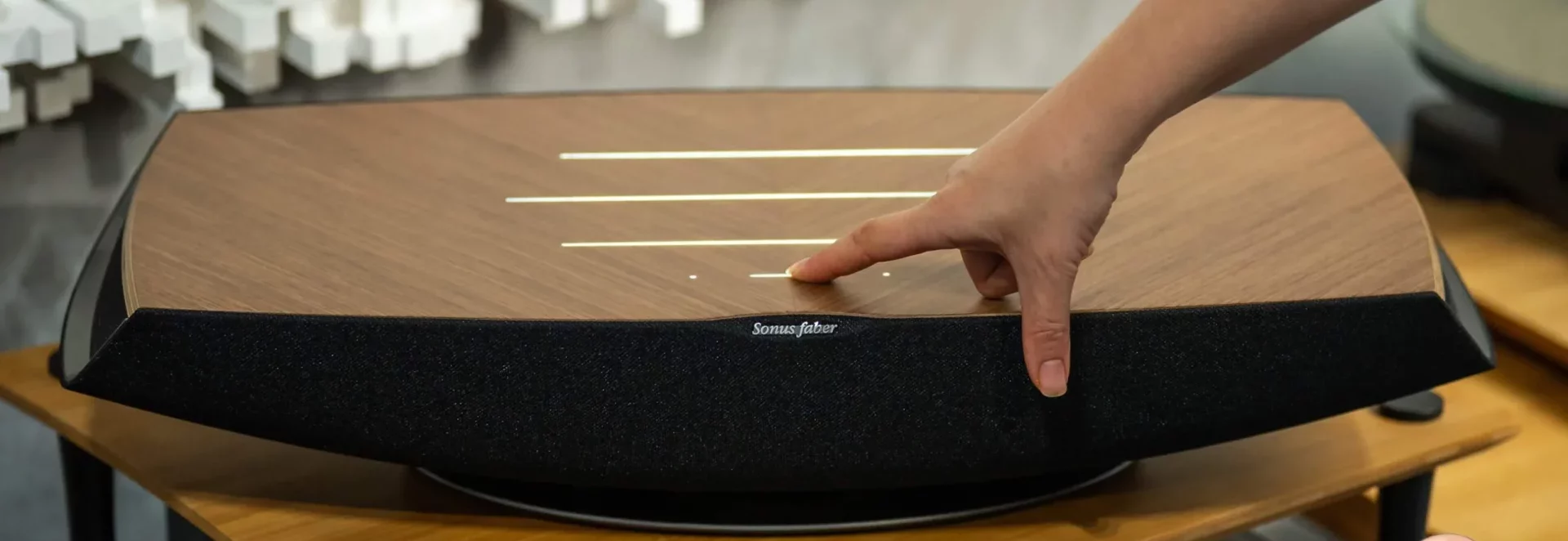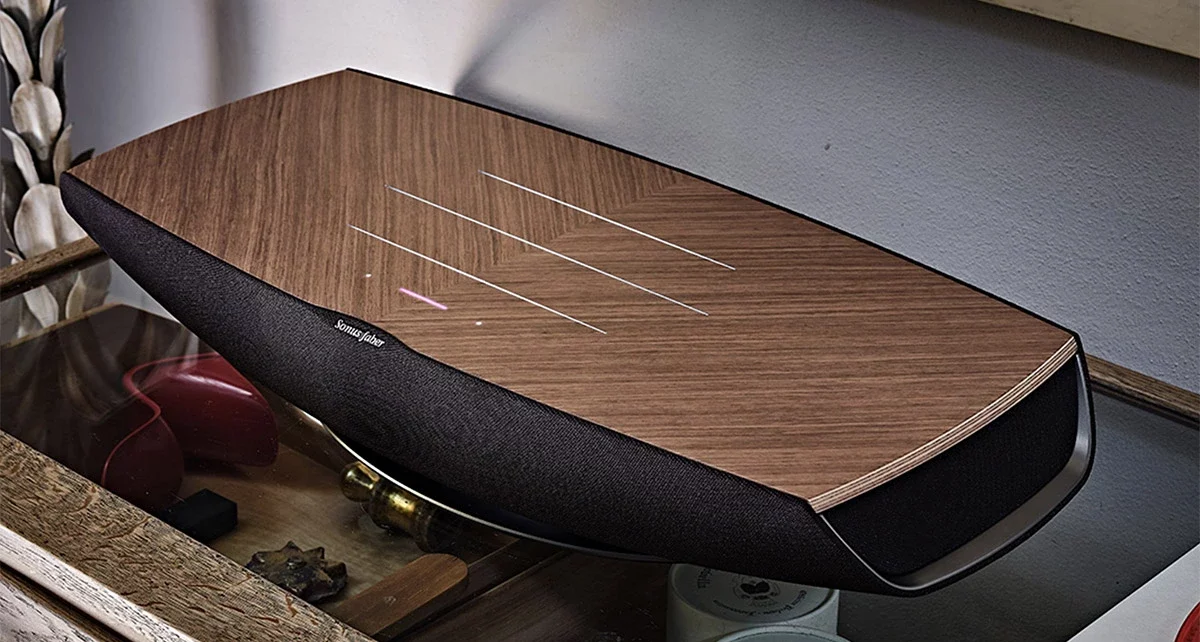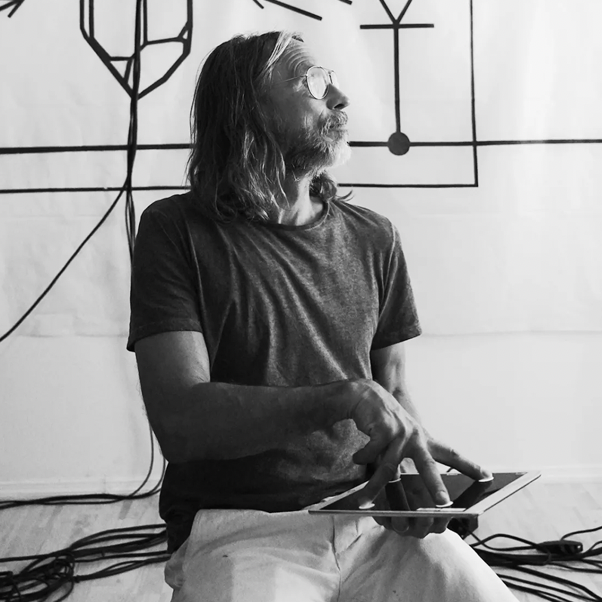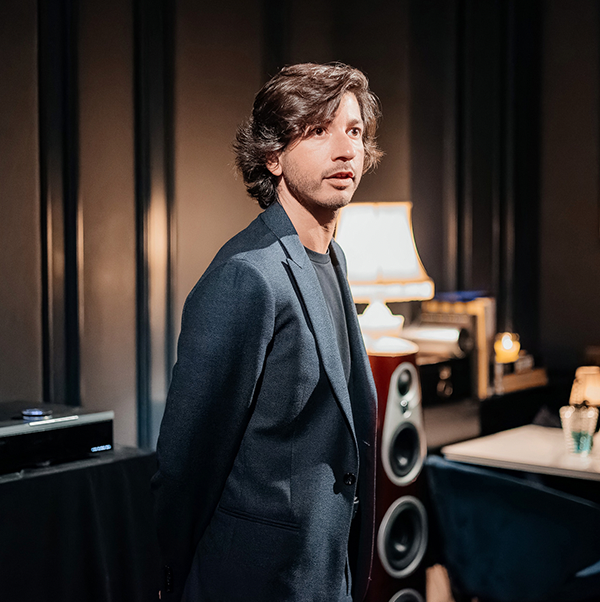We're all coming to favor streaming wireless speakers, better known as "smart speakers". This isn't necessarily a bad thing. What it means is that our wireless technologies are capable of delivering sophisticated hi-res audio. Unless of course, you're willing to spend hours on cabling and setting up your home theatre system. If you aren't, we've got the right surprise for you.
Smart speakers are cool, but how will the audio industry behemoths react? Linn has the Series 3, Klipsch has the Threes, Piega has the Premium 501. But in this article, we want to focus on the Sonus Faber Omnia. Why? Take one look and its evident - these speakers fall in the category of most beautiful speakers ever made.
The Omnia can appear to be like its SF16 all-in-one cousin. The SF16 was dedicated to The Snail system which set Sonus Faber on the audio equipment map. Built in 1980, it is still fondly remembered by the brand as the inaugural project of Franco Serblin. The Omnia, by comparison is much smaller, and doesn't house the kind of technology.
But the Omnia is possibly the best way Sonus Faber could make its entry in the streaming wireless speaker space. After testing out this speakers, we're happy to be so right about this. We don't mean to rave about it, but be appreciative. Here's a deeper, more extensive dive into why we think so.
Design
The Omnia combines everything that screams Sonus Faber. It's curvaceous shape and walnut wood exterior will command your attention. Rub your hands over the wood, and you'll find it hard to keep your hands off. The black grille integrates like a design with the elongated shape. Needless to say, it is textbook-Sonus Faber style.
There are four light strips that work like a decoration on the top wooden panel. The shortest strip indicates the method of music connection, wired or wireless. The longer strip indicates the volume level, which can be changed with the two dots on either side.
The remote matches the design aesthetic of the speakers. But because you'll be playing the music from your phone most of the time, there is an app to help. You can also use Google voice control through your phone to control the speaker.
Features
Before we go into the Sonus Faber specifics, we'd like to talk about the wireless streaming aspect of these speakers. Sonus Faber does not try to control playing music through its own app. This is a smart decision, considering how we're used to our native streaming apps. The number of services the Omnia supports include AirPlay 2, Google Cast, YouTube Music, Apple Music, Amazon Music and Spotify Connect. If you have your own NAS drive library, you must use a third-party DLNA app like BubbleUPnP or subscribe to Roon.
As Sonus Faber’s Chief Designer Officer, Livio Cucuzza, puts it:
“The customer knows how to use that, so keeping things familiar for their existing experience made sense to us.”
But if you want to use the Omnia for improved home theater experience, an HDMI ARC socket is available. For vinyl enthusiasts, the Omnia comes with a switchable phono/line input adapter. WiFi isn't necessary for the wireless connectivity - the Omnia uses aptX HD Bluetooth.
Sound
Like most wireless streaming speakers, the Omnia requires clearance for true audio liftoff. But there's a larger reason for why this recommendation is necessary for the Omnia. When you get a thing of beauty like the Omnia, you'll want to test what the optimal sound is like. The Omnia is capable of producing the same depths of audio excellence as its larger cousins. Talk about tonal balance or setting the right soundstage, and yes, the Omnia stands up there with the rest.
The Omnia does not waver when it hits the high treble or the low bass. Even in a dense mix, the clarity of the individual instruments pleases us. Indeed, it is not hard to imagine that the audio delivery is from one of their floorstanding speakers. The small size of the Omnia actually aids in the bass delivery. There's enough and more of high quality translation. We must make a mention of the mids - the Omnia handles it without losing texture. From Kanye West to Nina Simone, we've tested this across the audio spectrum. We were expecting it to be good, but it is fantastic.
SONUS FABER OMNIA TECHNICAL SPECIFICATIONS
- Output: 490 watts
- Drivers: x7
- Connectivity: Tidal Connect, Spotify Connect, aptX HD Bluetooth, AirPlay 2, Google Chromecast
- Inputs Phono, line-level, HDMI
How the Omnia manages clear delivery even in dense mixes deserves mention. With the compact packing of many drivers, most all-in-one systems fail to achieve this. This is thanks to their Crescendo technology. This manipulates the 44mm side-firing cellulose pulp drivers to create the soundstage. But the soundstage produced maintains an immersive, three-dimensional quality. Just as you would expect from Sonus Faber.
To appreciate how the Omnia manages the sound quality it produces, we must take stock. Two 19mm silk dome tweeters, a pair of 75mm paper pulp cone midrange drivers and a 165mm long-throw aluminum cone woofer, all driven by a 490-watt amplifier.
The only wireless streamers we've seen that come close to the Omnia is the Naim Mu-so 2. The Mu-so 2 is yet another fine example of wireless streaming speakers that set the benchmark. But the Omnia's clarity and spacious soundstage will have you looking out for it. It's rhythmic quality shows a liveliness to deliver the best sound it can. And that drive is something we appreciate as audiophiles.
Verdict
We're very impressed with what the Omnia puts up for offer. Design - we're in love. Audio capabilities - it delivers a true Sonus Faber experience. If you're the kind of person who wants to relax to some music with some wine, the Omnia is a fine choice.
Image credits: Sonus Faber
Content inspired by: Sonus Faber, What HiFi?, TechHive

















